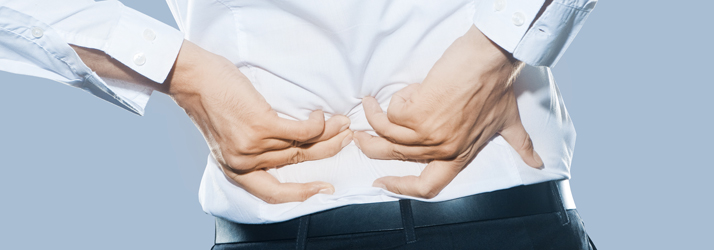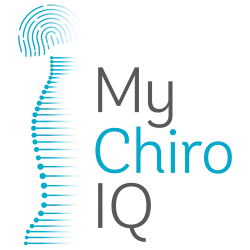Back Pain Treatment in Mt Pleasant SC

If you are living with chronic back pain then chiropractic care in Mt Pleasant SC might be a good treatment option. Almost everyone will experience some form of back pain, ranging from slightly irritating to completely crippling, in their lifetime. Whatever the degree of pain you are experiencing and whether it is acute or has become chronic, at the very least you would probably rather live without it. In the most extreme cases it can be difficult to go on living with it. This article aims to help you to understand what causes lower back pain, and how chiropractic treatment can help you achieve lasting back health so that you can go on enjoying those walks in the park.
Back Pain in Mt Pleasant SC
The back is a broad term that covers a large area of the body. It is made up of many tendons, ligaments, discs, muscles, and bones. Without a solid understanding of these different parts, it can be complicated to locate and address the source of the pain. The following explains some of the most common issues and their identifying features. It also explains how chiropractic medicine can help to resolve them. This is a general guideline to help you in your quest for effective treatment, but we highly recommend that you seek a professional opinion to properly diagnose these issues.
Disc Herniation, Disc Bulging, and Slipped Disc
An injury to one or many spinal discs is a condition which refers to a problem with a rubbery disc between the spinal bones. This condition occurs when the soft center of a spinal disc pushes through a tear in the tougher exterior casing.
These disc injuries may cause no symptoms or may be very severe depending on the type and severity of the herniation. Disc herniations of the back will often pinch the nerves in this area and cause localized painful symptoms often aggravated with movement of the back and can cause numbness and tingling down the legs.
A typical type of numbness/tingling down the back of the legs is called sciatica. Disc herniations may require surgery but oftentimes respond very to chiropractic, acupuncture, and physical therapy to reduce the stress on the disc.
Modalities such as traction, grade IV laser and E-stim can reduce the stress placed on the disc and the inflammation surrounding the disc while additional treatments such as adjustments, stretching, manual tissue release, and application of the McKenzie method can improve or eliminate the symptoms.
Pulled Muscles
A muscle pull of the back is usually caused by abnormal bending, lifting, or twisting. It can also be caused by a single instance of improper lifting or by overstressing the back muscles. In this instance, intense pain will ensue and will be followed by an inability to move out of a position, bend down, or stand up straight. A person is usually stuck in one position.
A chronic (long-term) strain usually results from overuse after prolonged, repetitive movement of the muscles and tendons. In this situation, a chronic ‘tight’ back and a general inability to bend down to the floor without pain is common.
Returning the injured muscle back to a normal resting position through stretching, application of heat or ice and E-stim, manual therapies of massage and adjustments, and traction are important to reduce pain.
Strengthening and instructing proper lifting form following reduction of pain is important to reduce the risk of additional muscle pulls.
Pinched Nerves and Sciatica
A pinched nerve in the lower back can cause symptoms of numbness, tingling, and burning that can shoot down the legs.
Sciatica is a classic form of a pinched nerve that runs down the back of the leg and can go down to the bottom of the foot.
A pinched nerve can be caused by an injury to a disc, degenerative joint disease, stenosis, arthritis, abnormal posture in sitting/standing or muscle tightness and muscle spasms.
Figuring out the root cause of a pinched nerve is vital to reduce symptoms in the back and down the legs.
Modalities such as traction, grade IV laser and E-stim can reduce the stress placed on the disc and the inflammation surrounding the disc while additional treatments such as adjustments, stretching, manual tissue release, and application of the McKenzie method can improve or eliminate the symptoms.
Compression Fractures
A compression fracture of the back is common as we begin to age and joints begin to break down.
A compression fracture is typically associated with osteopenia or osteoporosis which is abnormal breakdown of bone and would be diagnosed with a bone density scan. Compression fractures are associated with abnormal posture and a generalized forward flexed position.
If the compression fracture is severe, surgery will be required to improve the stability of the spine.
Abdominal, core, lower back, and mid-back strengthening and postural training is important to regain proper spinal alignment and position to equally distribute stress in standing and sitting.
Whiplash Injury
A whiplash injury is commonly associated with a car accident but can also result from sports accidents, physical abuse and other types of traumas, such as a fall.
Whiplash occurs when a body gets jolted in one direction very suddenly and the muscles of the back or neck will spasm to protect the spine, neck, and head.
Whiplash injury is characterized by intense pain and an inability or restriction to movement. Whiplash injury may recover quickly but can be a long recovery up to 3-6 months if severe.
Symptoms following a whiplash injury vary but can be dull/achey pain, sharp pain, burning pain, numbness/tingling into arms or legs, or headaches to name a few.
Physical therapy, chiropractic, or acupuncture care should be administered to improve symptoms if symptoms last more than 1-2 weeks to prevent long term pain. Injections may also be administered to reduce muscle spasms and muscle symptoms.
Sacroiliac Dysfunction/SI Joint Pain/SIJD
Sacroiliitis is an inflammation of one or both of your sacroiliac joints — situated where your lower spine and pelvis connect. Most commonly, sharp pain will be pinpointed to the dimples of the lower back and dull/achey or burning pain will extend down the buttocks and down the back or side of one or both legs.
Prolonged sitting with crossed legs, standing, stair climbing, or hiking can worsen the pain. A person will often stand with most weight on one leg to avoid the area of the dysfunction.
To improve sacroiliac pain, it is important to reduce inflammation, regain proper alignment, and to strengthen the pelvic floor, hips, core, and lower back to maintain stability of the area.
Generalized Lower Back Pain
Non-specific lower back pain can have causes that aren’t due to underlying disease or issue.
Examples include overuse such as working out or lifting too much, prolonged sitting and laying down, sleeping in an uncomfortable position, or wearing a poorly fitting backpack.
Generalized lower back pain responds very well to physical therapy, chiropractic care, and acupuncture to improve pain, function, and quality of life.
Rib Fracture/Rib Dysfunction
The difference between a rib fracture and rib dysfunction is an important distinction to make although symptoms may be similar.
A rib fracture is usually due to some sort of impact or fall. Significant tenderness over the area of fracture and pain with breathing will be present.
Rib dysfunction is typically described as sharp pain where the rib attaches to the spine and will have intense sharp pain with movement and with deep breathing.
A rib fracture requires rest for the area to heal while rib dysfunction can be fixed through therapy services to improve positioning and reduce muscle spasms around the area.
Shoulder Blade Pain (Scapular Dysfunction/Scapular Dyskinesis)
Scapular Dyskinesis or scapular dysfunction refers to the abnormal mobility or function of the scapula (shoulder blade). This is often a very subtle abnormality and it typically is not a primary complaint by the patient. However, it can be the underlying cause of the presenting upper back, neck, or shoulder pain.
Teasing out the slight abnormalities and improving long and weak, through exercise and strengthening, or tight and short muscles, through stretching and manual treatments, are important to improve scapular positioning and movement.
Subluxations
Subluxation is a medical term describing a misalignment in the vertebral column. There are a wide variety of causes, including physical stress, trauma, and toxins. Subluxations are often quite painful and can disrupt normal movement. Subluxations are one of the most commonly overlooked contributors to back pain. Chiropractors are trained to identify and correct this issue using non-invasive adjustment techniques.
Muscular Sprains and Tendon or Ligament Strains
Strains and sprains most typically occur when we engage in tasks that our body is not accustomed to, or when we are involved in an accident. Lifting while twisting, or stretching past one's limits are common causes of strains and sprains of the back. These can be extremely painful and are often accompanied by swelling and bruising of the surrounding area. Strains and sprains in the back tend to involve changes to the alignment of the spine and typically respond well to chiropractic care.
Stress and Back Pain
Chronic stress wreaks havoc on the body, and can eventually lead to hyper-tension and chronic back pain. Back pain is a result of tension and muscle spasms that occur when stress hormones are released. The tension will often accumulate in what are referred to as trigger points. These trigger points can be extremely painful and need professional attention to resolve. Chiropractors have the knowledge and tools to relieve stress from trigger points and to deal with underlying nervous system imbalances that may be keeping your body locked in patterns of stress and pain.
What To Do Next…
If you’re currently experiencing any of these symptoms and would like to learn more about how we can help, My Chiro iQ happily welcomes you for a complimentary consultation with Dr. Ross to determine what will be the recommended course of action for you. After an examination, he can provide an individualized approach to the root of the problem.
Call for your appointment today! (843) 766-4444
OFFICE HOURS
Monday
1:00pm - 6:00pm
Tuesday
8:00am - 5:00pm
Wednesday
8:00am - 5:00pm
Thursday
8:00am - 5:00pm
Friday
Closed
Saturday & Sunday
Closed
My Chiro iQ
419 Hibben St
Mt Pleasant, SC 29464



